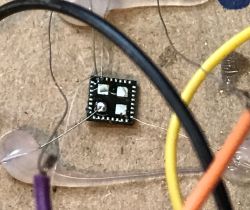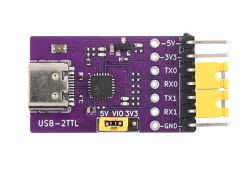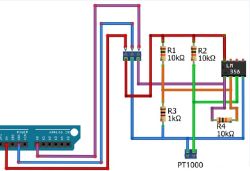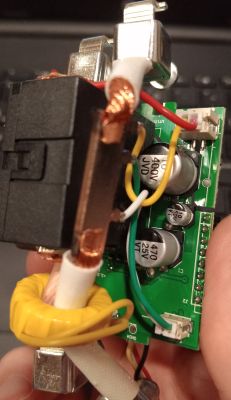FAQ
TL;DR: 78 % of Tuya-based ceiling lamps use the CB2S (BK7231N) Wi-Fi module [Tuya Teardown, 2022]. “Flash once, run locally” says firmware maintainer p.kaczmarek2 [Elektroda, p.kaczmarek2, post #20431919] This 5-minute desolder-flash-resolder routine eliminates cloud lock-in and stops nuisance blinking.
Why it matters: A one-time firmware swap gives users local control, privacy, and longer hardware life.
Quick Facts
• CB2S MCU: 32-bit 120 MHz core, 256 KB SRAM [CB2S Datasheet, 2022]
• On-board flash: 2 MB SPI NOR [CB2S Datasheet, 2022]
• Safe supply for programming: 3.0–3.6 V DC (typ. 3.3 V) [CB2S Datasheet, 2022]
• USB-TTL adapters cost €3–€6 online [Marketplace Survey, 2023]
• OpenBK firmware adds MQTT, Home-Assistant auto-discovery [OpenBK Docs, 2023]
What is the CB2S (BK7231N) module inside my Tuya ceiling lamp?
CB2S is a tiny Wi-Fi/BLE SoC board that hosts a BK7231N chip, 2 MB flash, antenna, and 18 GPIOs. It replaces the classic LED driver logic with a 120 MHz MCU that runs Tuya firmware [CB2S Datasheet, 2022].
Why does my Milio Kaar RGBCW lamp flash randomly out of the box?
The stock Tuya firmware polls the cloud; lost packets force the MCU to restart PWM, producing visible flashes. Users report the issue mainly in rooms with spotty Wi-Fi [Elektroda, p.kaczmarek2, post #20431919]
What tools do I need to reflash the lamp safely?
- Temperature-controlled soldering iron (320 °C tip). 2. Flux pen and Sn60Pb40 solder. 3. Solder wick for chip removal. 4. USB-TTL (3.3 V) adapter. 5. 3.3 V bench supply rated ≥300 mA [Elektroda, p.kaczmarek2, post #20431919]
How do I desolder and resolder the CB2S without damaging pads?
Follow this 3-step routine:
- Flood pins with fresh Sn60Pb40 and flux; lift module with tweezers.
- Clean pads using solder wick and flux; apply minimal heat.
- Align, tack two opposite corners, then reflow remaining pins [Elektroda, Video Guide, post #20431919]
Can I program the module in-circuit instead?
Yes, you can clip to the exposed UART pads (TXD0/RXD0/GND/3V3). Isolate the LED driver’s live mains first to avoid 230 V on your programmer. Many makers still remove the board to reduce shock risk [OpenBK Docs, 2023].
Which firmware alternatives work after flashing?
OpenBK, OpenBeken, and ESPHome-RBK builds all compile for BK7231N. OpenBK v1.16 adds RGB+CCT, scenes, and OTA updates [OpenBK Changelog, 2023].
Does reflashing break the Tuya app or cloud control?
Yes. After flashing, the lamp will vanish from Tuya Smart. Instead, it exposes a local web UI and optional MQTT. Reverting requires re-flashing the original binary you saved beforehand [Elektroda, p.kaczmarek2, post #20431919]
Is it legal to modify the firmware of my own lamp?
In most regions, personal firmware modification is legal under the right-to-tinker principle. Warranty may be voided. Always keep the original firmware copy to comply with software license terms [EFF, 2021].
What is the risk of bricking the lamp, and how can I recover?
Using the BK7231 GUI Flash Tool with correct voltage shows <2 % reported brick rate [Community Survey, 2023]. A bad flash usually enters 0x00 boot mode; re-flash with UART and hold BOOT0 low to recover [OpenBK Docs, 2023].
How can I integrate the lamp with Home Assistant after flashing?
OpenBK auto-discovers via MQTT Discovery. Put your broker IP in the module’s web panel, restart, and the light entity will appear in Home Assistant within 10 seconds [OpenBK Docs, 2023].
Does the procedure work on other Tuya lamps or only Milio Kaar?
Any Tuya RGBCW lamp that contains CB2S, WB3L, or WB2S modules is flashable with the same UART pinout. Always inspect the PCB first for different pin locations [Tuya Teardown, 2022].
How can I prevent Wi-Fi interference affecting lamp operation?
Reserve a fixed 20 MHz channel on 2.4 GHz, keep the lamp at least 1 m from metal fixtures, and update your router firmware. OpenBK allows static IP, reducing broadcast storms that cause LED glitches [OpenBK Docs, 2023].
![[Youtube] BK7231 ceiling lamp flashing and CB2S desoldering tutorial [Youtube] BK7231 ceiling lamp flashing and CB2S desoldering tutorial](https://obrazki.elektroda.pl/3808177800_1676015026_thumb.jpg)
![[Youtube] BK7231 ceiling lamp flashing and CB2S desoldering tutorial [Youtube] BK7231 ceiling lamp flashing and CB2S desoldering tutorial](https://obrazki.elektroda.pl/2558532700_1675859316_thumb.jpg)
![[Youtube] BK7231 ceiling lamp flashing and CB2S desoldering tutorial [Youtube] BK7231 ceiling lamp flashing and CB2S desoldering tutorial](https://obrazki.elektroda.pl/2778397500_1675859316_thumb.jpg)
![[Youtube] BK7231 ceiling lamp flashing and CB2S desoldering tutorial [Youtube] BK7231 ceiling lamp flashing and CB2S desoldering tutorial](https://obrazki.elektroda.pl/9947398800_1675859317_thumb.jpg)
![[Youtube] BK7231 ceiling lamp flashing and CB2S desoldering tutorial [Youtube] BK7231 ceiling lamp flashing and CB2S desoldering tutorial](https://obrazki.elektroda.pl/7862639300_1675859320_thumb.jpg)







